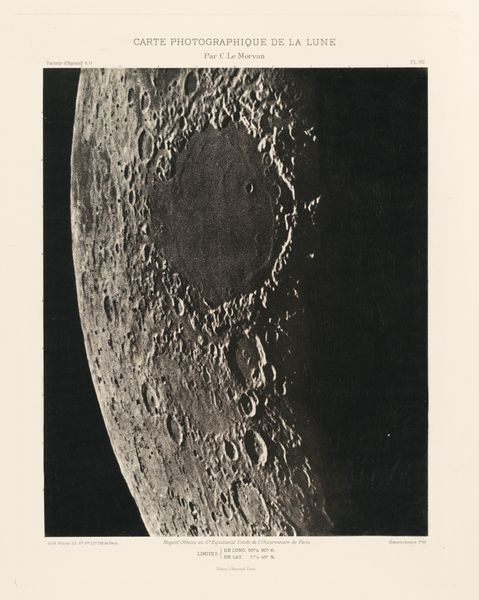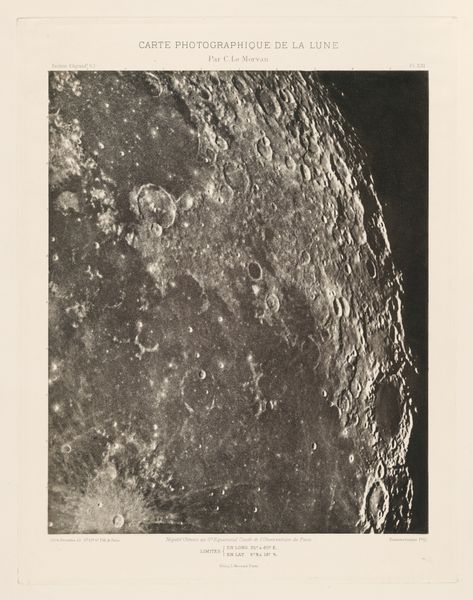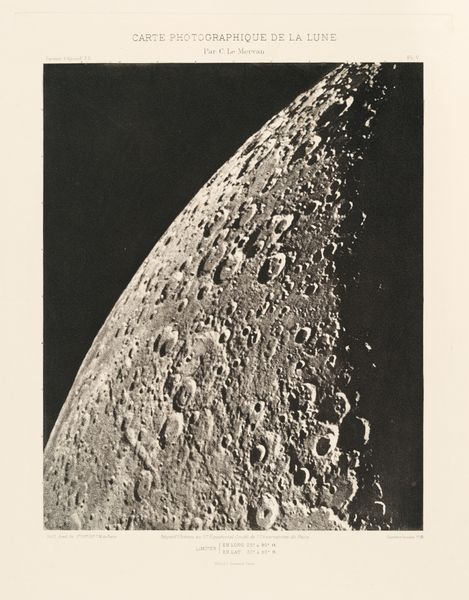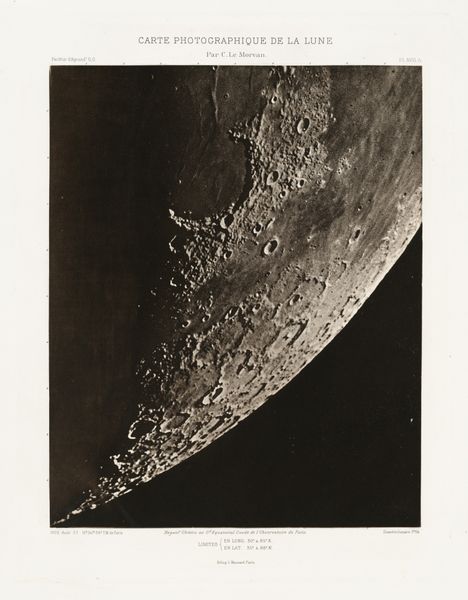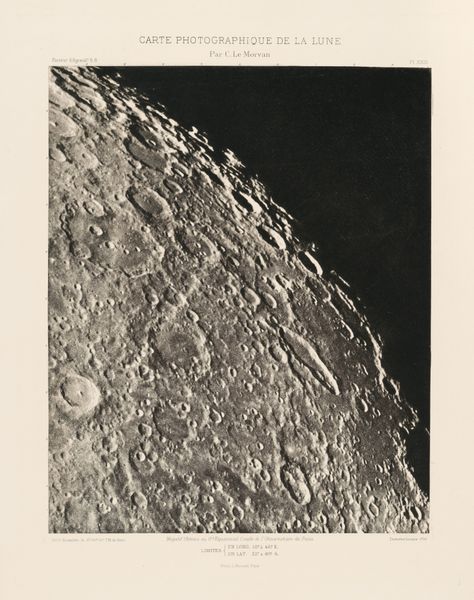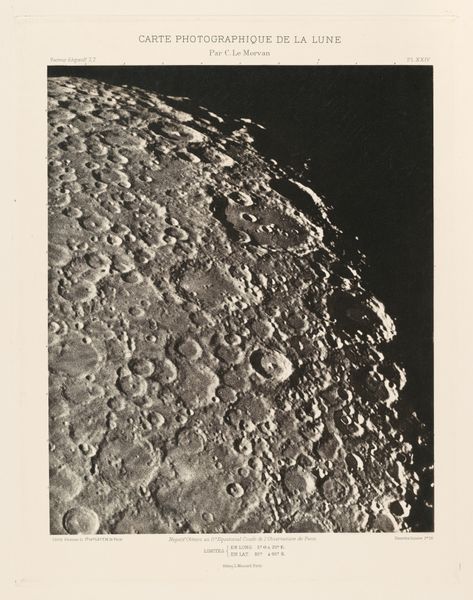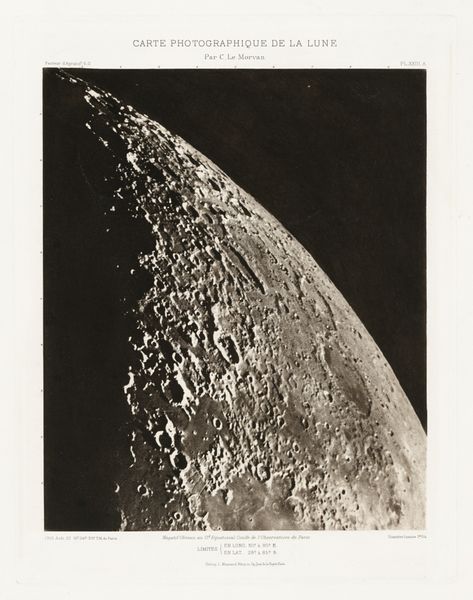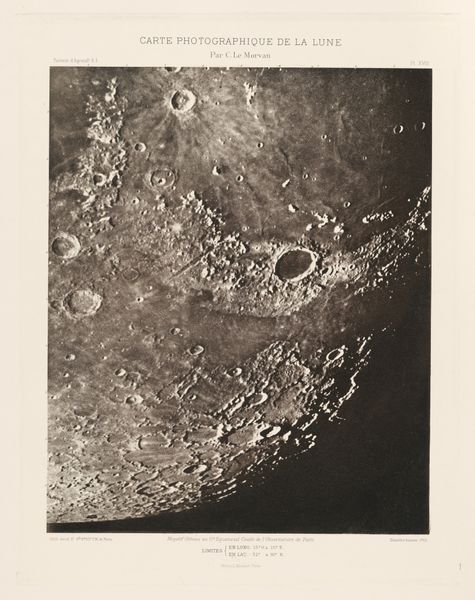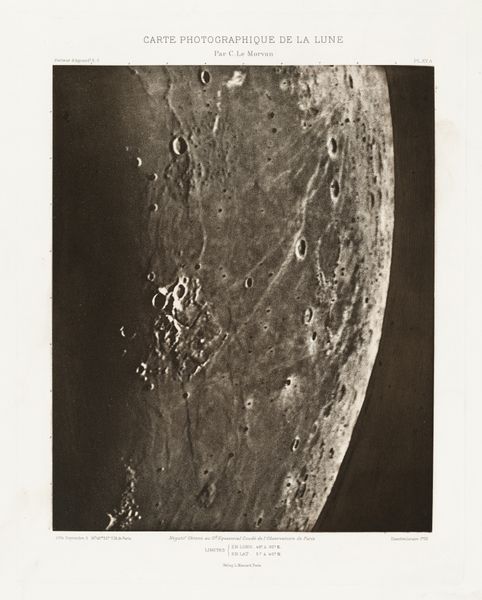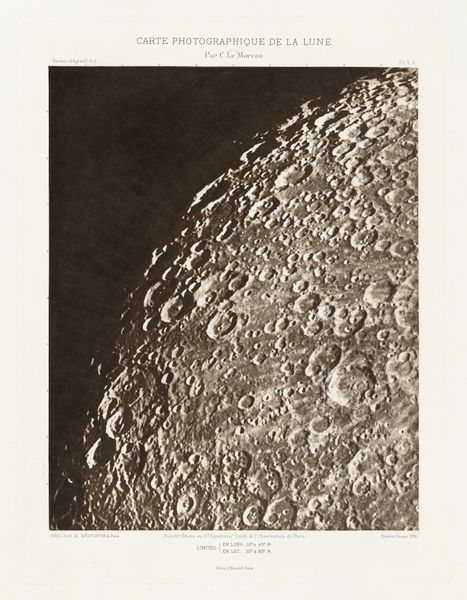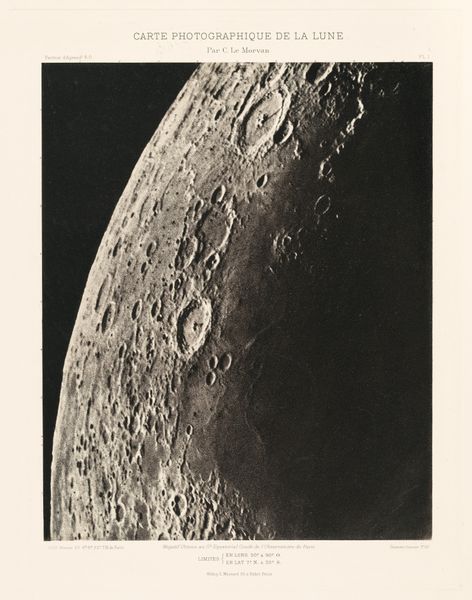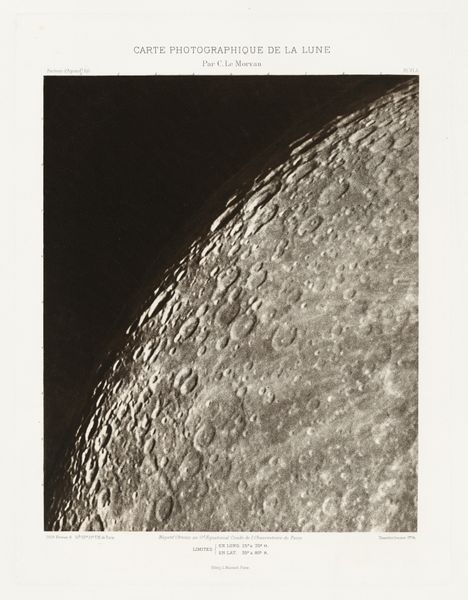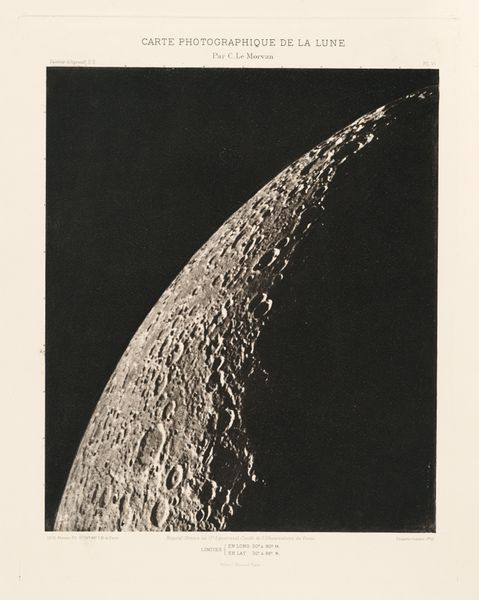
Carte photographique de la lune, planche XXII (Photographic Chart of the Moon, plate XXII) Possibly 1904 - 1914
0:00
0:00
print, photography, gelatin-silver-print
# print
#
landscape
#
photography
#
geometric
#
gelatin-silver-print
#
modernism
Dimensions: image: 31.1 × 25.5 cm (12 1/4 × 10 1/16 in.) plate: 38.9 × 29.5 cm (15 5/16 × 11 5/8 in.) sheet: 49 × 37.9 cm (19 5/16 × 14 15/16 in.) tissue: 42.55 × 37.47 cm (16 3/4 × 14 3/4 in.)
Copyright: National Gallery of Art: CC0 1.0
This is Plate XXII from Charles Le Morvan's Photographic Chart of the Moon. I love the way it captures this orb hanging in space. It’s interesting to think about the labor and process here. Unlike painting, it involves a mechanical eye, a camera, but that doesn’t mean it’s devoid of an artistic hand. I find the gray scale particularly compelling. It shifts and changes with the light, giving the surface of the moon this sculptural, almost tactile quality. It reminds me of a drawing rendered with charcoal. Look closely and you’ll see the gradations, from the deepest blacks to the softest grays and the crisp whites. You can almost feel the dust and the emptiness. It's a bit like Vija Celmins' drawings of the night sky, but of course this is a photograph. Still, it reminds us that art often is an ongoing exchange. It is open to reinterpretation, to endless imaginative possibilities, and to going to the moon and back again.
Comments
No comments
Be the first to comment and join the conversation on the ultimate creative platform.
